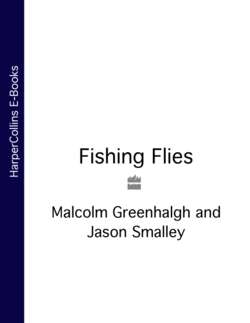Читать книгу Fishing Flies - Smalley - Страница 15
THE MACEDONIAN FLY
ОглавлениеThe first recorded fly was published by a Roman called Claudius Aelianus in a manuscript book De Animalium Natura in about AD200. The fly was used to catch fish ‘with speckled fins’, which must have been trout. The trout rose to catch flies at the surface of a river then called the Astraeus in what was then Macedonia. Research by Andrew Herd and Dr Gorin Grubil has shown that the Astraeus is now known as the Arapitsa, and it flows through modern Greece. The real flies were known at the time as hippouros and they appear to have had combined characteristics of a midge, a wasp and a bee. Investigations by Fred Buller (in The American Fly Fisher, vol. 22, 1996) into the identity of hippouros indicated that it was either a horsefly Therioplectes tricolor or a drone-fly Episyrphus balteatus.
The imitation of the MACEDONIAN FLY was simple: ‘They fasten red wool around a hook, and fix onto the hook two feathers which grow under a cock’s wattle, and which in colour are like wax’. Or, to give it as a tyer’s recipe:
Hook: Not given; suggest dry fly, size 14.
Thread: Not given; suggest red or brown.
Body: Red wool.
Wings: Two wax-coloured cock hackle points. [Wax coloured? Beeswax is a light creamy-buff.]
It seems clear that fly-fishing is a very ancient way of catching fish. Andrew Herd traced it back as far, perhaps, as the ninth century BC, and showed that by the early Middle Ages (late twelfth and early thirteenth century) fly-fishing was well established in Japan, in Spain, in central Europe and in Britain. The central European school is especially interesting for it produced an early fifteenth-century Bavarian manuscript, translated into English by Professor Richard Hoffmann, and called Fisher’s Craft and Lettered Art. It included flies for catching several species of European freshwater fish, but the way the flies were tied and some of the terms used (for example, ‘stingel’) are not clear in their meaning. Two examples are given below. The resultant flies were tied with a great deal of guesswork!
